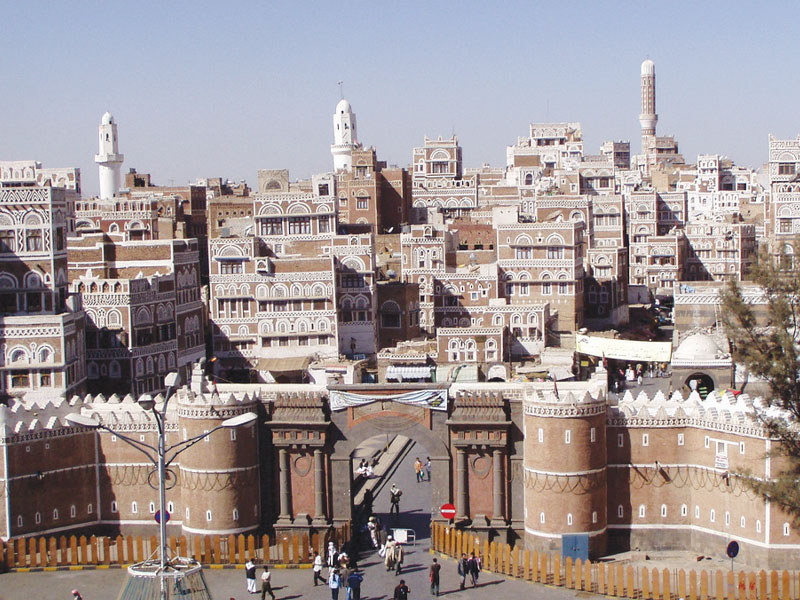The Material Folk Heritage of the Old City of Sanaa
Issue 22

The city of Sanaa’s material folk heritage is represented in the houses, mosques, gardens, public baths, fountains and wells that the city maintains within its old walls.

City planners opted for a system of closed neighborhoods due to the land’s hilliness and twisting roads. A typical neighborhood would include an open area known as ‘Sarha’, which serves as a meeting point between roads. Around this ‘Sarha’, we usually find residences grouped with a garden in the back (Al Miqshamah), which served as recreational space for the residents.
Most streets are short, narrow and twisting; none of the streets stretch the whole way across the city, and some streets end in cul-de-sacs.
Sanaa is renowned for its historic architecture with impressive decorative elements. Most of Sanaa’s buildings have multiple floors; built before skyscrapers, seven-storey buildings are common. Most buildings have decorative frames around the windows. The buildings are designed to fit together and they form a long wall along the street. The structures are harmonious, and colors range from brown to red and black.
The city of Sanaa has residential and public wells; people relied on groundwater due to the scarcity of running rivers.
Souks (markets) are among the city’s most prominent features and material heritage. Since the pre-Islamic period, Sanaa has been known for its souks and they still have distinctive features including:
Winding, narrow streets
Single-storey shops that do not have apartments above them
Smaller souks that specialize in a commodity or craft
Around the souk, there are facilities for brokers, merchants and the animals they ride in addition to the stores. The city also has facilities such as public baths and fountains.
Just as their ancestors did, the people of Sanaa use local materials to build and decorate.
Ali Saeed Saif
Yemen







































































